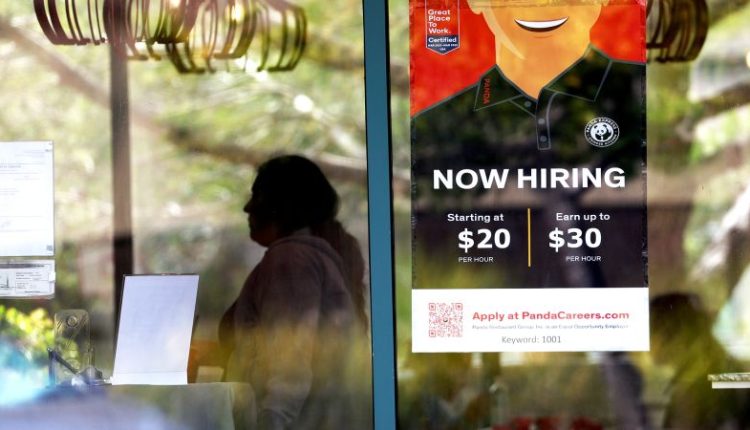In the event of a US government shutdown, the Bureau of Labor Statistics says it will stop releasing data, including key figures on inflation and unemployment. A lack of crucial government data would make it difficult for investors and the Federal Reserve to interpret the US economy.
For now, the economy’s future is unclear: Inflation could slow to the Fed’s 2% target without a spike in unemployment — known as a “soft landing” — or the economy could slip into a recession as the effects of the Fed’s 11 rate hikes take a deeper hold.
The state of the economy is understood through data and, every month, the BLS publishes key indicators such as the Consumer Price Index, which gauges inflation; and the Employment Situation Summary, which measures unemployment and job growth. Investors make trading decisions based on those reports.
With a spending deadline at the end of the month, House Republicans have struggled to reach a consensus on a defense spending bill and are now are moving ahead with a plan to temporarily fund the government. Meanwhile, some Republicans are threatening to ouster House Speaker Kevin McCarthy if he doesn’t acquiesce to their demands. The political stalemate is expected to lead to a lapse in funding for the government.
“In the event of a federal government shutdown, the Bureau of Labor Statistics will suspend data collection, processing, and dissemination,” a spokesperson said in a statement. “Once funding is restored, BLS will resume normal operations and notify the public of any changes to the news release schedule on the BLS release calendar.”
The partial government shutdown around the turn of 2019 had a limited impact on BLS’s survey operations, but it did result in about a dozen data reports being delayed. Greg Daco, chief economist at EY-Parthenon, said “the 35-day government shutdown led to a data drought with the postponement of over 10 key data releases including trade, housing, and consumer spending data.”
While private groups release data gauging various parts of the economy, federal ones are still critical for decision makers.
“Decisions are made based on the consistency and reliability of government data,” said Agron Nicaj, US economist at MUFG. “This is especially true in today’s economic climate where uncertainty is high and the margin of error is very small for the Fed to over or under tighten monetary policy.”
The Fed is at a pivotal point in its historic campaign to defeat high inflation. Price increases have eased from a four-decade peak last June, but spiking oil prices have inflicted more pain at the pump, pushing up headline inflation. The Consumer Price Index rose 3.7% in August from a year earlier, up from July’s 3.2% annual rise, mostly due to higher gas prices. Some economists argue that energy prices could complicate the Fed’s inflation fight if they remain elevated for long enough, while others say it merely reflects inflation’s bumpy road to the Fed’s 2% target.
The central bank also pays close attention to the still-strong job market because of its role in pushing up prices. The BLS’s monthly Job Openings and Labor Turnover Survey shows how the United States still has millions more job openings than job seekers, meaning workers can demand higher wages.
Fed officials are currently contending with some uncertainties when considering the economy’s outlook, notably how much the Fed’s previous rate hikes has already — and will continue to -— weigh on economic activity.
A lack of critical government figures could risk policy missteps for the Fed, which always stresses that its monetary policy decisions are “data dependent.”
“If, for argument’s sake, the Fed overestimates the strength of the real economy and raises rates further in November — because of delayed downward revisions to July and August data, and delayed access to weaker September and October data — investors, businesses, and households could incur unnecessary costs and risks,” said Julia Pollak, chief economist at ZipRecruiter.
“By the time the Fed discovered its mistake, the effects of excessive monetary tightening could be difficult to reverse,” she said.
It’s unclear whether the Fed would hold rates steady in the absence of government data or how it would navigate a government shutdown when deliberating monetary policy. The effects of a government shutdown also depend on how long it lasts, which also isn’t clear at this point.
Read the full article here

